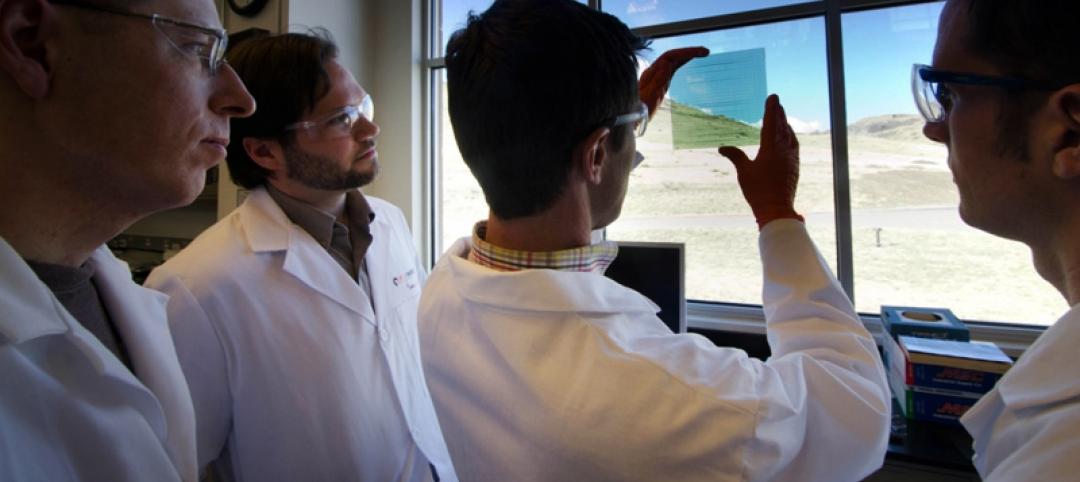A key component in strengthening cities and preparing them for stronger urban futures is ensuring our civic and political leaders fully understand their facility assets. Cities own scores of buildings and need to collect and leverage data as they plan, build and make decisions amidst complex economic, social, and political factors.
Over the past few years, the city of Buffalo has developed a cutting-edge facility management program to ensure it is utilizing its facilities and operations as efficiently, effectively and sustainably as possible.
Given the challenges facing Buffalo—dated processes, aging buildings and infrastructures, and building deficiencies—are challenges facing many North American cities, here are some key steps other civic leaders should be taking to maximize their facility resources.
ASSESS
Facility Condition Assessments (FCA) are the first step every city should take in rethinking their facility management efforts. It is imperative civic leaders understand the state of these facilities, current-use metrics and the funding requirements for repairing buildings and/or keeping them up to code. The city of Buffalo hired a team of professionals to execute assessments for more than 4 million sf of city-owned facilities including fire, police, cultural and sports buildings.
“The data derived from this series of assessments gives the city the information needed to ensure funding is spent accurately and strategically, said Steve Stepniak, city of Buffalo Commissioner of Public Works.
AUTOMATE
A critical step in launching a modern facility management program is automating systems. Cities lacking automated work orders and all-CAD drawings with no automated process for planning and programming must evolve.
Cities should invest in the creation of AutoCAD floor plans and document management systems to issue and retrieve drawings via a web platform. Additionally, the City of Buffalo created a computerized maintenance management system to track system repairs and costs and provide budget numbers to justified requests, custom reports and enhanced interface options.
PLAN
Every city and municipality in the country is currently engaged in planning for the short and long-term. This planning is vital and cities need to ensure their maximizing these efforts by leveraging the data collected during the assessment phase.
The city of Buffalo is leveraging its data through a more informed planning model. The city created a new budgeting tool to establish the funding requirements to maintain or improve the Facility Condition Index (FCI) of all buildings and also implemented a new programming process that allows the division of buildings to focus recapitalization on operational priority buildings and critical systems. Buffalo’s investment in these resources strengthens their planning efforts moving forward.
IMPLEMENT
Once data is collected and the plans made, civic leaders need to turn their ideas into action. It becomes much easier to convince others of the value of key facility decisions when they are supported by data. Those with opposing views can argue the merits of ideas, but it’s nearly impossible to dispute facts revealing cost savings and efficiencies gained.
The city of Buffalo is already well into the implementation of the plans and realizing significant value. The lessons and best practices learned through the City of Buffalo’s experience can be leveraged across all cities and help leaders make valuable, strategic decisions moving forward.
“That what the city of Buffalo now has – a basis for decision making. The data derived from these assessments inform us about the condition of each facility and the related costs,” added Stepniak. “Now, we can make the decision that best achieves current and long-term objectives.”
About the Author
Joseph Cassata is the leader of CannonDesign’s Facility Optimization Solutions team, focused on helping cities and organizations manage their facilities and resources more efficiently, effectively and sustainably. www.CannnonDesign.com/FOS
Related Stories
Smart Buildings | Jun 11, 2015
Google launches company to improve city living
The search engine giant is yet again diversifying its products. Google has co-created a startup, called Sidewalk Labs, that will focus on “developing innovative technologies to improve cities.”
Green | Jun 8, 2015
Maryland tech firm is developing spray-on solar panels for windows
Made primarily out of hydrogen and carbon, the coating can turn see-through surfaces into solar panels.
Green | Jun 8, 2015
Diamond Schmitt Architects creates tool to compare energy use data across building types
The firm's new ecoMetrics tool allows for a comprehensive analysis of data from energy simulation models across a wide range of the company’s building types.
High-rise Construction | Jun 5, 2015
Japanese policymakers discuss mandate for toilets in elevators
This quirky-sounding building code is a safety measure for the earthquake-prone nation.
Cultural Facilities | Jun 5, 2015
Chicago’s 606 elevated park opens
The 2.7-mile stretch repurposes an abandoned elevated train track that snakes through Humboldt Park and Bucktown.
Smart Buildings | Jun 4, 2015
Evidence suggests wider lanes make city streets more dangerous
Lanes that are 10.5 feet wide have lower side impact crashes than standard 12-foot lanes, suggests new research.
BIM and Information Technology | Jun 3, 2015
More accurate GPS ready to change the way we shop, interact, and explore
New technology reduces location errors from the size of a car to the size of a nickel—a 100 times increase in accuracy. This is a major technological breakthrough that will affect how we interact with environments, the places we shop, and entertainment venues.
Multifamily Housing | Jun 1, 2015
Sacramento moves forward on multifamily project with new modular supplier
Guerdon Modular Buildings will provide modules for 118 apartments.
| May 29, 2015
Austin, Salt Lake City, Davis, Calif., and Boston creating first protected intersections in U.S.
Protected intersections arrange traffic so that everyone—bicyclists included—can see all moving traffic simply by looking forward instead of forcing people in cars and on bikes to look constantly over their shoulders.
Smart Buildings | May 28, 2015
4 ways cold-climate cities can make the most of their waterfronts
Though cold-climate cities pose a unique challenge for waterfront development, with effective planning waterfront cities with freezing winter months can still take advantage of the spaces year-round.
















